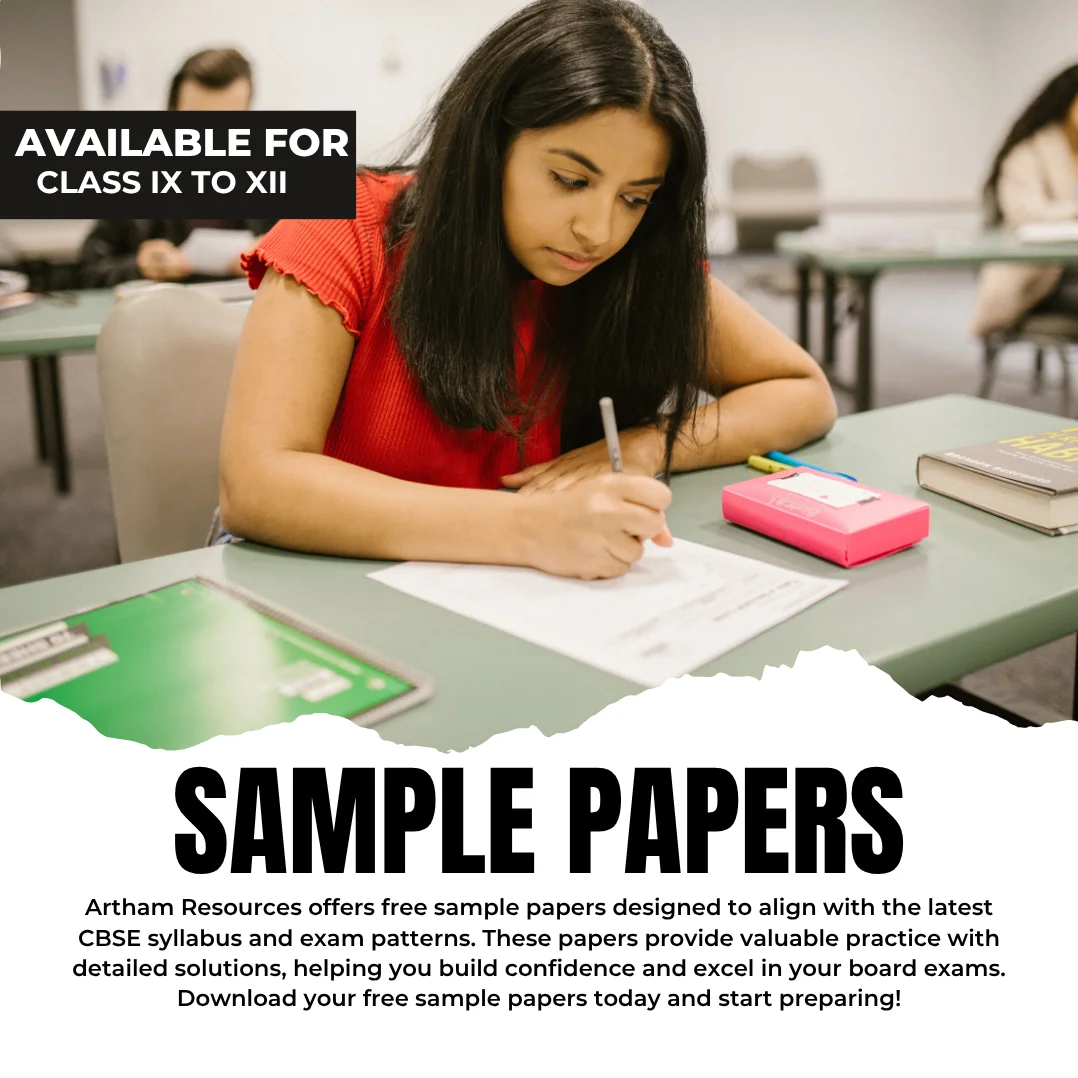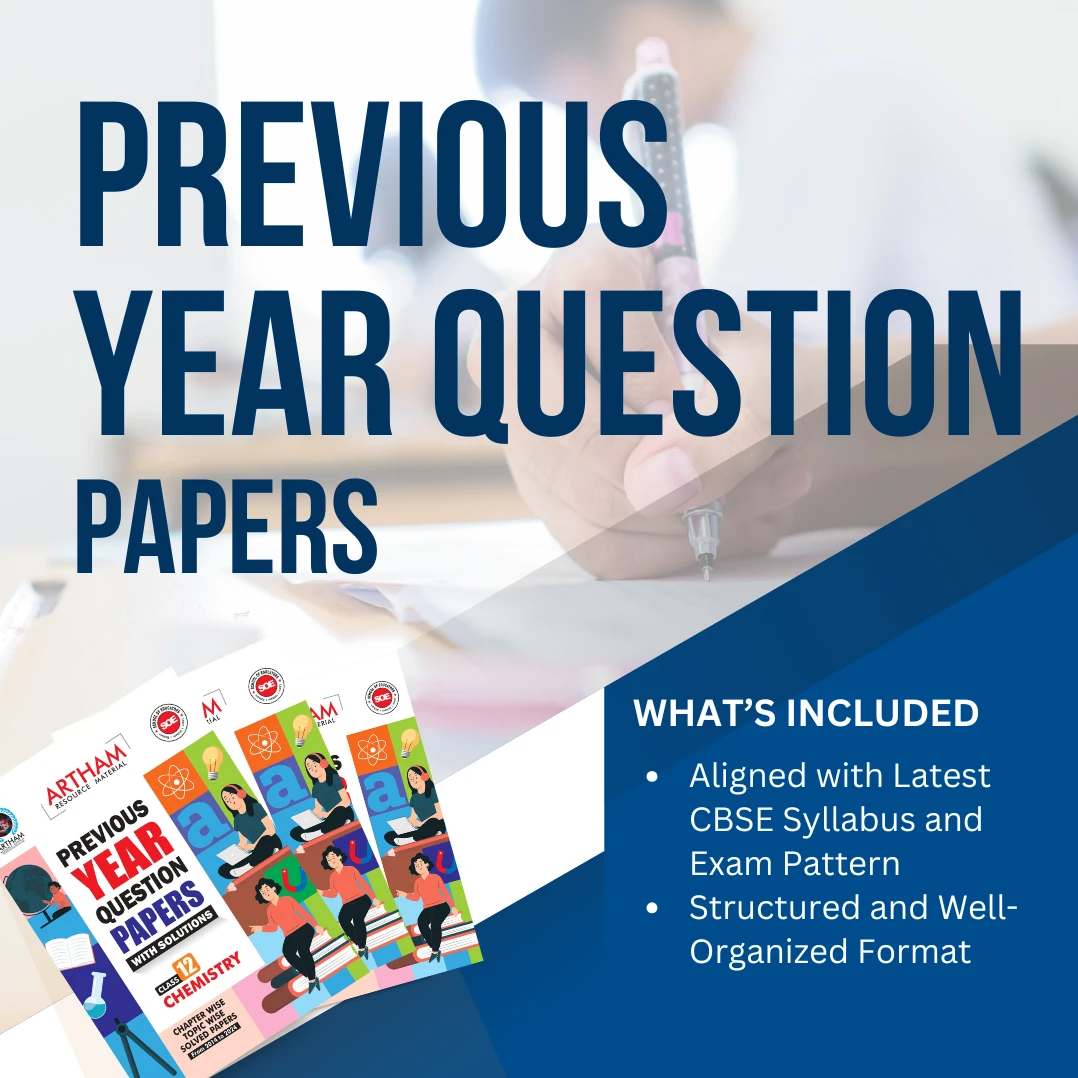Shop Left Sidebar
- CBSE
- Chapter Wise Topic Wise Notes
- Class 10
- Class 9
- Competency-Based Question Bank
- Competitive Exams & Aptitude Tests
- Comprehensive Viva Voice
- Courses
- CUET
- Daily Practice Paper (DPP)
- Diagnostic Assessment
- eBooks
- For New School
- Foundation and Olympiad Study Material
- Gift for Students
- Gift for Teachers
- Half Yearly Sample Question Paper with Solution
- Holiday Homework
- Illustrative Charts
- Journal
- Kindergarten
- Lesson Plan
- Life Skills
- Line by Line Questions
- Mind Maps
- Must Buy
- NCERT Exemplar Solutions
- NCERT Solutions
- Notes
- POWERPOINT PRESENTATIONS
- Pre Launch Stage
- Premium WhatsApp Group
- Previous Year Question Papers
- Previous Year Question Papers with Solutions
- Print version of SOP
- Sample Paper
- Sample Paper with Solutions
- Self Development
- Split -up Syllabus
- Sports and Physical Education
- Standard Operating Manuals
- Study Materials for Students
- Teachers Manual with Lesson Plans
Best seller
-
-100%
₹ 50.00Original price was: ₹ 50.00.₹ 0.00Current price is: ₹ 0.00. -
-100%
₹ 50.00Original price was: ₹ 50.00.₹ 0.00Current price is: ₹ 0.00. -
-100%
₹ 50.00Original price was: ₹ 50.00.₹ 0.00Current price is: ₹ 0.00. -
-100%
₹ 299.00Original price was: ₹ 299.00.₹ 0.00Current price is: ₹ 0.00.
- CBSE
- Chapter Wise Topic Wise Notes
- Class 10
- Class 9
- Competency-Based Question Bank
- Competitive Exams & Aptitude Tests
- Comprehensive Viva Voice
- Courses
- CUET
- Daily Practice Paper (DPP)
- Diagnostic Assessment
- eBooks
- For New School
- Foundation and Olympiad Study Material
- Gift for Students
- Gift for Teachers
- Half Yearly Sample Question Paper with Solution
- Holiday Homework
- Illustrative Charts
- Journal
- Kindergarten
- Lesson Plan
- Life Skills
- Line by Line Questions
- Mind Maps
- Must Buy
- NCERT Exemplar Solutions
- NCERT Solutions
- Notes
- POWERPOINT PRESENTATIONS
- Pre Launch Stage
- Premium WhatsApp Group
- Previous Year Question Papers
- Previous Year Question Papers with Solutions
- Print version of SOP
- Sample Paper
- Sample Paper with Solutions
- Self Development
- Split -up Syllabus
- Sports and Physical Education
- Standard Operating Manuals
- Study Materials for Students
- Teachers Manual with Lesson Plans
Showing 497–512 of 563 results
-
-62%
Lesson Plan Class 6 Science Chapter 6 the living Organisms - Characteristics and Habitats
₹ 50.00Original price was: ₹ 50.00.₹ 19.00Current price is: ₹ 19.00.This lesson plan focuses on Chapter 6 of the Class 6 Science curriculum, “The Living Organisms – Characteristics and Habitats.” The chapter introduces students to the diverse characteristics of living organisms and their habitats. Students will explore the fundamental features of living things such as growth, reproduction, response to stimuli, and adaptation to environments.
-
-62%
Lesson Plan Class 6 Science Chapter 5 BODY MOVEMENTS
₹ 50.00Original price was: ₹ 50.00.₹ 19.00Current price is: ₹ 19.00.This lesson plan covers Chapter 5 of the Class 6 Science curriculum, focusing on “Body Movements.” The chapter explores the different types of movements that the human body is capable of, including skeletal movements, muscular movements, and the role of joints in facilitating these movements. Students will learn about the structure and function of bones, muscles, and joints, and how they work together to enable actions such as walking, running, bending, and lifting.
-
-62%
Lesson Plan Class 6 Science Chapter 4 GETTING TO KNOW PLANTS
₹ 50.00Original price was: ₹ 50.00.₹ 19.00Current price is: ₹ 19.00.This lesson plan covers Chapter 4 of the Class 6 Science curriculum, titled “Getting to Know Plants.” The chapter introduces students to the various parts of plants and their functions. Students will explore the structure and role of roots, stems, leaves, flowers, and fruits. They will also learn to classify plants into herbs, shrubs, and trees based on their characteristics.
-
-62%
Lesson Plan Class 6 Science Chapter 3 SEPARATION OF SUBSTANCES
₹ 50.00Original price was: ₹ 50.00.₹ 19.00Current price is: ₹ 19.00.This lesson plan covers Chapter 3 of the Class 6 Science curriculum, titled “Separation of Substances.” The chapter aims to teach students about various methods used to separate different types of mixtures and the principles behind these methods. Students will explore techniques such as handpicking, winnowing, sieving, sedimentation, decantation, filtration, and evaporation.
-
-62%
Lesson Plan Class 6 Science Chapter 2 Sorting Materials into Groups
₹ 50.00Original price was: ₹ 50.00.₹ 19.00Current price is: ₹ 19.00.This lesson plan covers Chapter 2 of the Class 6 Science curriculum, titled “Sorting Materials into Groups.” The chapter introduces students to the concept of sorting and classifying materials based on their properties such as appearance, hardness, solubility, transparency, and more.
-
-62%
Lesson Plan Class 6 Science Chapter 1 Components of Food
₹ 50.00Original price was: ₹ 50.00.₹ 19.00Current price is: ₹ 19.00.This lesson plan focuses on Chapter 1 of the Class 6 Science curriculum, titled “Components of Food.” The chapter aims to educate students about the various nutrients present in food, their sources, and their roles in maintaining health. Through interactive activities, group discussions, and simple experiments, students will learn about carbohydrates, proteins, fats, vitamins, minerals, water, and dietary fibers.
-
-70%
Chapter Wise Topic Wise Lesson Plan Class 11 English (Poem) Chapter 4 Childhood
₹ 50.00Original price was: ₹ 50.00.₹ 15.00Current price is: ₹ 15.00.This lesson plan for Class 11 English focuses on the poem “Childhood” by Markus Natten, which appears as Chapter 4 in the syllabus. The lesson aims to help students explore the concept of growing up, innocence, and self-discovery as expressed in the poem.
-
-70%
Chapter Wise Topic Wise Lesson Plan Class 11 English (Poem) Chapter 3 The Voice of the Rain
₹ 50.00Original price was: ₹ 50.00.₹ 15.00Current price is: ₹ 15.00.The lesson plan for Class 11 English (Poem) Chapter 3, “The Voice of the Rain,” focuses on the beautiful metaphorical representation of rain. The poem, written by Walt Whitman, explores the rain’s role in nature and the cycle of life. This lesson aims to help students understand the symbolic connection between rain and renewal, life, and growth.
-
-70%
Chapter Wise Topic Wise Lesson Plan Class 11 English (Poem) Chapter 2 The Laburnum Top
₹ 50.00Original price was: ₹ 50.00.₹ 15.00Current price is: ₹ 15.00.The lesson plan for Class 11 English Poem Chapter 2, The Laburnum Top by Ted Hughes, focuses on exploring the vivid imagery and symbolism in the poem. The lesson aims to help students understand the connection between nature and life through the symbolic portrayal of a laburnum tree.
-
-70%
Chapter Wise Topic Wise Lesson Plan Class 11 English (Poem) Chapter 1 A Photograph
₹ 50.00Original price was: ₹ 50.00.₹ 15.00Current price is: ₹ 15.00.This lesson plan for Class 11 English (Poem) Chapter 1, “A Photograph,” aims to provide a comprehensive and engaging understanding of the poem, focusing on the themes of loss, memory, and the passage of time. The lesson will help students explore the poet’s reflection on a childhood photograph and the emotional impact it has on the speaker.
-
-70%
Chapter Wise Topic Wise Lesson Plan Class 11 English (Prose) Chapter 6 Silk Road
₹ 50.00Original price was: ₹ 50.00.₹ 15.00Current price is: ₹ 15.00.The “Chapter Wise Topic Wise Lesson Plan for Class 11 English (Prose) – Chapter 6: Silk Road” is designed to help students understand the rich historical and cultural significance of the Silk Road. This lesson plan outlines clear learning objectives, including an exploration of the ancient trade route that connected the East to the West.
-
-70%
Chapter Wise Topic Wise Lesson Plan Class 11 English (Prose) Chapter 5 The Adventure
₹ 50.00Original price was: ₹ 50.00.₹ 15.00Current price is: ₹ 15.00.This lesson plan for Class 11 English (Prose) Chapter 5, The Adventure, is designed to provide a comprehensive understanding of the story through detailed and engaging activities. The lesson plan begins with an introduction to the author and the central theme of the chapter, followed by a discussion of key characters, setting, and the plot.
-
-70%
Chapter Wise Topic Wise Lesson Plan Class 11 English (Prose) Chapter 4 The Ailing Planet: the Green Movement’s Role
₹ 50.00Original price was: ₹ 50.00.₹ 15.00Current price is: ₹ 15.00.This lesson plan for Chapter 4 of Class 11 English (Prose) focuses on the essay The Ailing Planet: The Green Movement’s Role by Nani Palkhivala. The chapter highlights the urgent environmental issues facing the world, particularly the degradation of the planet due to human activities.
-
-70%
Chapter Wise Topic Wise Lesson Plan Class 11 English (Prose) Chapter 3 Discovering Tut: the Saga Continues
₹ 50.00Original price was: ₹ 50.00.₹ 15.00Current price is: ₹ 15.00.Chapter 3 of Class 11 English (Prose), “Discovering Tut: The Saga Continues,” explores the mystery surrounding the tomb of the Egyptian Pharaoh Tutankhamun. This lesson introduces students to the archaeological discovery of Tut’s tomb and the scientific research that followed, highlighting the advancement of forensic technology.
-
-70%
Chapter Wise Topic Wise Lesson Plan Class 11 English (Prose) Chapter 2 We’re Not Afraid to Die... if We Can All Be Together
₹ 50.00Original price was: ₹ 50.00.₹ 15.00Current price is: ₹ 15.00.Chapter 2 of the Class 11 English Prose, “We’re Not Afraid to Die… if We Can All Be Together”, focuses on human resilience, courage, and the power of unity in the face of adversity. This lesson plan provides a detailed guide to teaching the chapter, incorporating key themes such as survival, family bonding, teamwork, and bravery.
-
-70%
Chapter Wise Topic Wise Lesson Plan Class 11 English (Prose) Chapter 1 The Portrait of a Lady
₹ 50.00Original price was: ₹ 50.00.₹ 15.00Current price is: ₹ 15.00.This lesson plan for Class 11 English, Chapter 1, “The Portrait of a Lady,” focuses on building comprehension and analytical skills through a detailed exploration of the text. The lesson begins with a brief introduction to the author, Khushwant Singh, and the central theme of the chapter, which revolves around the narrator’s relationship with his grandmother.
Teaching is one of the hardest and most important jobs in the world. We provide the support that teachers need to transform their subjects into terms that their students will understand.
- Nageen International
- B-162, 4th Floor, DDA Shed, Okhla Industrial Area Phase 1 New Delhi-110020 (India)
- WhatsApp us at +91-95208-11111
- Email: info@educatorsresource.in
- (Monday to Saturday) WhatsApp 24*7
2025 Educator Resources. All Rights Reserved.




